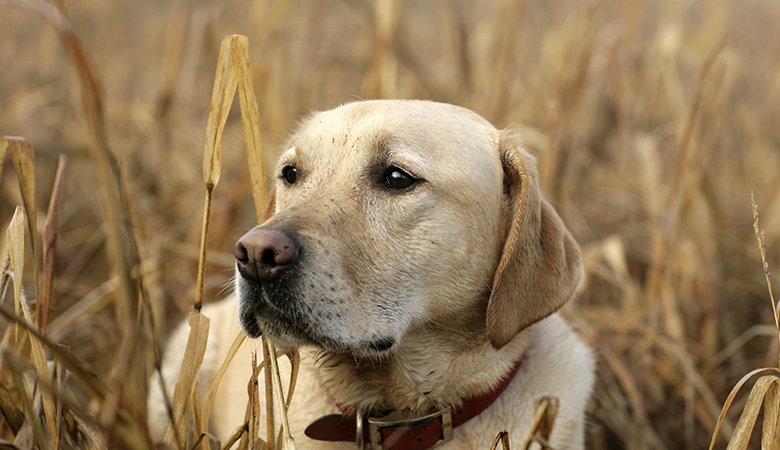Which dogs develop spondylosis?
Spondylosis is generally considered a normal part of aging in animals. However, some dog breeds are more prone to it than others and may show signs of spondylosis at a younger age. This is especially known in breeds like the Boxer.
Dogs that have been highly active in sports or have performed heavy physical work may also be more likely to develop spondylosis.
What symptoms does a dog with spondylosis show?
Symptoms vary depending on the severity of the spondylosis. This is often linked to the condition of the intervertebral discs, the extent of bone bridging, and whether or not nerves are being compressed.
Common signs seen in dogs with spondylosis:
- A stiff neck and back
- A hunched or arched back
- A stiff gait with reduced control of the hindquarters
- Muscle loss in the hind legs
- Difficulty lying down and getting up
- Inability to climb stairs or jump into the car
- Pain
- Behavioural changes, often due to pain
- Difficulty assuming urination or defecation posture
- In some cases, dragging of the hind legs due to nerve dysfunction
How can I be sure my dog has spondylosis?
Your veterinarian can diagnose spondylosis. During a physical exam, a stiff back and sensitivity to pressure are often noticeable.
X-rays can confirm the diagnosis. The bony spurs and bridges are usually clearly visible on a lateral view.
If there are signs of nerve damage, a CT scan or MRI may be recommended to get a more detailed look at the spinal cord, nerves, meninges, and intervertebral discs. This is important when evaluating your dog’s long-term prognosis.
Can spondylosis be treated?
Spondylosis is actually a form of osteoarthritis. The existing bone growths cannot be removed. Treatment focuses on slowing down the degenerative process and relieving associated symptoms. This often involves pain management and support for joints and nerve tissue.
Prescription pain relief can only be obtained through your veterinarian.
Supplements for dogs with spondylosis
There are several supplements that can offer additional support for your dog. Examples include:
- Puur Spondy, which supports the muscles and joints of the hindquarters. It also has a beneficial effect on the lower spinal cord and helps coordinate the hind legs and maintain strength.
- Omega-3 fatty acids, such as those in Doils Joint. These have anti-inflammatory effects and help keep cells stable and flexible. They support healthy joints and nerve tissue. Synopet Joint Support Dog, with green-lipped mussel and curcumin, also has anti-inflammatory properties.
- Natural pain relievers like Puur Dolor
- Joint-supporting supplements such as Dr. Ann’s Mobility Support Advanced, which can slow the progression of arthritis
Nutrition for dogs with spondylosis
Dogs that are overweight should ideally lose weight to reduce pressure on the spine. Special weight-loss diets are available for this purpose.
You can also support your dog’s joints through diet.
Consider a therapeutic diet that supports both joint health and weight management, such as Hill’s Metabolic + Mobility – Prescription Diet – Canine.
Other treatment options for dogs with spondylosis
Physiotherapy and low-impact activities such as swimming (note: your dog must be able to enter and exit the water easily for this to be low-impact!) can help support dogs with spondylosis by maintaining muscle strength.
If spinal instability causes misalignment of the vertebrae, orthomanual therapy may be an option. This should only be performed by specialist veterinarians after a confirmed diagnosis.
Life expectancy for dogs with spondylosis
The prognosis for dogs with spondylosis depends on the severity of symptoms and how well the dog responds to supportive treatment.
If symptoms are well managed with medication and other measures, a dog can still enjoy a good quality of life.
However, if pain or mobility issues begin to seriously affect your dog’s well-being, it’s time to have an honest discussion with your vet. In some cases, humane euthanasia may be the kindest choice to prevent further suffering.
Still have questions about spondylosis in dogs? Feel free to contact us at veterinarian@vetsend.co.uk.




